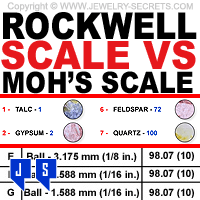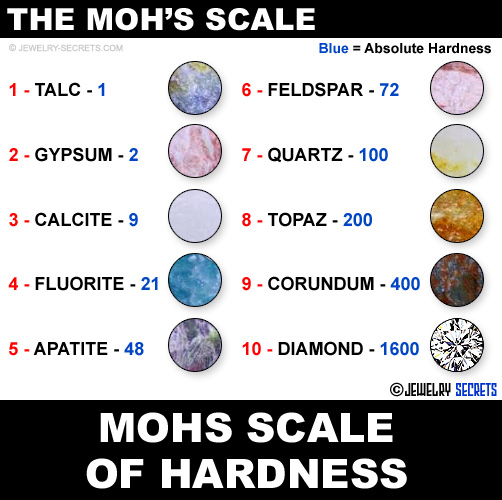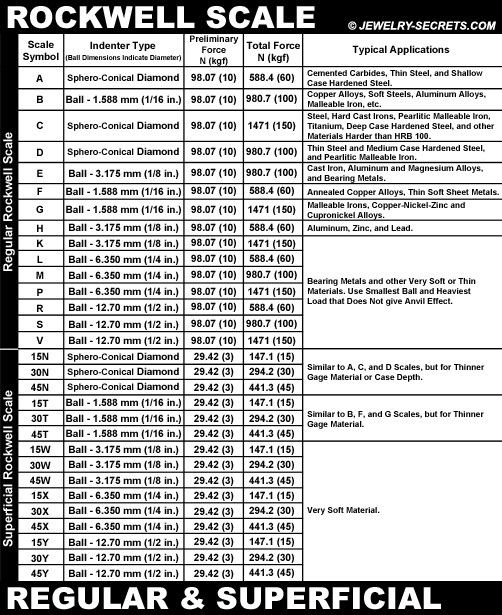ROCKWELL SCALE VS THE MOH’S SCALE
THE MOH'S SCALE OF HARDNESS VERSUS THE ROCKWELL SCALE
This post contains affiliate links. If you use these links to buy something I may earn a commission. Thanks! As an Amazon Associate I also earn from qualifying purchases.

Most people who deal with Gemstones & Jewelry, whether you’re Buying, Selling, Collecting or just Studying, are pretty familiar with the Moh’s Scale of Hardness.
The Moh’s Scale was developed by Friedrich Mohs in 1812. It lists Gemstones and Minerals on a Scale from 1-10 for their Hardness and Durability (like a Scratch Test).
This Simple Chart makes for Good Reference when Explaining to customers how hard a Particular Stone is as compared to other Popular Gemstones and even Diamonds (which is a 10).
You can quickly see that Ruby and Sapphire (Corundum) is at the Top of the Charts, while Pearl and Gold sit at just 2.5 on the Scale.
Here is the scale below…
The Moh’s Scale of Hardness

From 1 – 10, the Gems on the Moh’s Scale of Hardness are:
- TALC – 1
- GYPSUM – 2
- CALCITE – 9
- FLUORITE – 21
- APATITE – 48
- FELDSPAR – 72
- QUARTZ – 100
- TOPAZ – 200
- CORUNDUM – 400
- DIAMOND – 1600 (Blue Numbers are Absolute Hardness)
As you can see, this 10 item list is Pretty Slim (Pearl is where?), the ENTIRE Moh’s Scale List (really large list) is in my post here: The Moh’s Scale!
What’s interesting is the fact that Jewelers often refer to Metals on the Moh’s Scale as well.
Common Metals used in Jewelry, Bracelets, Rings and Pendants are found in the grid below…
|
|
But here’s the funny part… Metals aren’t really tested with the Moh’s Scale of Hardness, they are actually, and more accurately, tested with the Rockwell Scale of Hardness.
The Rockwell Scale
The Rockwell Scale was invented in 1908 by two men, Hugh Rockwell and Stanley Rockwell (no relation). They Devised a System that would test the Hardness of a Material such as Steel, Copper, Iron, Aluminum, Titanium, Zinc and Lead.
This Scale looks at how an item can be indented by another item (called the Indenter), which will show the Tensile Strength of that piece.
Are you ready for this?
Take a peek at the Rockwell Scale of Hardness…
(That image pulls up a much larger and more readable version of the Rockwell Scale)
See… That’s why Jewelers use the Moh’s Scale instead. It’s so much easier to read and understand.
Can you imagine? “Oh, that Titanium has a Preliminary Force of 98.07” (eyes roll)
So when a Jeweler says that Alexandrite is an 8.5 on the Moh’s Scale, and that Platinum is a 4-4.5… You’ll get it!
It just makes Sense!
Now you know! :)















what is the rc hardness of a common file